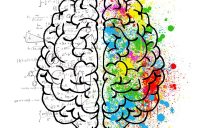Government leaders face unique challenges in workforce management, where balancing productivity, employee morale, and strategic goals can be complex. Effective strategies can transform these challenges into opportunities, ensuring a motivated and efficient workforce ready to meet the demands of public service.

Flexible Working Arrangements: Embracing Modern Workstyles
The traditional 9-to-5 workday is evolving. Flexible working arrangements, such as telecommuting and flexible hours, have proven to enhance productivity and job satisfaction. According to a survey by Buffer, remote workers report being significantly happier than those who never work remotely. By allowing employees to work in ways that best suit their personal lives and work styles, government agencies can foster a more engaged and productive workforce.
Performance Management: Nurturing Talent Through Constructive Feedback
Effective performance management is essential for nurturing talent and ensuring continuous improvement. Regular feedback sessions, clear goal setting, and performance appraisals help employees understand their strengths and areas for development. The Harvard Business Review suggests that regular feedback is crucial for employee development and helps in aligning individual performance with organizational goals. Implementing a structured performance management system can transform how employees perceive their growth within the organization.
Employee Retention: Strategies for Keeping Top Talent
High employee turnover can disrupt operations and increase costs. To retain top talent, government leaders should focus on professional development and career advancement opportunities. Offering training programs, mentorship, coaching, and clear career paths can significantly improve retention rates. According to LinkedIn’s 2023 Workplace Learning Report, a significant focus is on microlearning in support of continuous growth. By fostering a culture of continuous learning, government agencies can ensure their workforce remains motivated and committed.
Strategic Workforce Planning: Aligning Human Resources with Organizational Goals
Strategic workforce planning is about anticipating future needs and aligning human resources accordingly. This involves analyzing current workforce capabilities, predicting future demands, and developing strategies to bridge any gaps. The Society for Human Resource Management (SHRM) emphasizes that providing workers with clear paths to advancement may help improve retention, reduce skills gaps and increase productivity, all while containing costs. By adopting this forward-thinking approach, government leaders can ensure their agencies are prepared for future challenges.
Workforce Management Techniques: Essential Tools for Leaders
Several techniques can enhance workforce management in government. Effective communication is paramount — clear, consistent messaging helps keep everyone aligned. Leveraging technology to streamline processes reduces inefficiencies and frees up time for more strategic tasks. Fostering a collaborative culture encourages innovation and inclusivity, ensuring all employees feel valued and heard.
Continuous Improvement: Driving Excellence in Workforce Management
Continuous improvement is a cornerstone of effective workforce management, particularly in the government sector, where evolving demands require agility and innovation. By embedding a culture of continuous improvement, government leaders can ensure that their teams are not only adapting to changes but also proactively enhancing their skills and processes. This can be achieved through open forums for suggestions and encouraging a mindset of lifelong learning among employees. Implementing initiatives such as Lean or Six Sigma can also help streamline operations, reduce waste, and improve overall efficiency.
Conclusion
Mastering workforce management in the government sector requires a blend of modern work arrangements, effective performance management, strategic planning, and continuous improvement. By adopting these strategies, government leaders can create a dynamic, efficient, and motivated workforce ready to tackle the complexities of public service. Implementing these practices not only enhances productivity but also ensures long-term organizational success.
Dr. Rhonda Farrell is a transformation advisor with decades of experience driving impactful change and strategic growth for DoD, IC, Joint, and commercial agencies and organizations. She has a robust background in digital transformation, organizational development, and process improvement, offering a unique perspective that combines technical expertise with a deep understanding of business dynamics. As a strategy and innovation leader, she aligns with CIO, CTO, CDO, CISO, and Chief of Staff initiatives to identify strategic gaps, realign missions, and re-engineer organizations. Based in Baltimore and a proud US Marine Corps veteran, she brings a disciplined, resilient, and mission-focused approach to her work, enabling organizations to pivot and innovate successfully.




Leave a Reply
You must be logged in to post a comment.